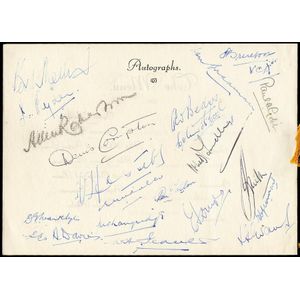Warrior Deity Painting from Ming/Qing Dynasty
You must be a subscriber, and be logged in to view price and dealer details.
Subscribe Now to view actual auction price for this item
When you subscribe, you have the option of setting the currency in which to display prices to $Au, $US, $NZ or Stg.
- Circa - A Latin term meaning 'about', often used in the antique trade to give an approximate date for the piece, usually considered to be five years on either side of the circa year. Thus, circa 1900 means the piece was made about 1900, probably between 1895 and 1905. The expression is sometimes abbreviated to c.1900.
- Qing Dynasty - The Qing Dynasty was the last imperial dynasty of China, ruling from 1644 to 1912. It was established by the Manchu people, who originated from the northeastern region of China. The Qing Dynasty was preceded by the Ming Dynasty and followed by the Republic of China.
- Ming Dynasty - The Ming Dynasty was a ruling dynasty of China from 1368 to 1644. It succeeded the Yuan Dynasty and preceded the Qing Dynasty. The Ming Dynasty was established by Zhu Yuanzhang, a former Buddhist monk who became a rebel leader and eventually overthrew the Mongol Yuan Dynasty. During the Ming Dynasty, China experienced a period of relative stability and prosperity. The government was centralized and bureaucratic, with the emperor at the top of the hierarchy. The Ming Dynasty is known for its cultural achievements, including the development of porcelain, the invention of movable type printing, and the construction of the Great Wall of China.
This item has been included into following indexes:
Visually similar items

1946-47 England Tour to Australia: dinner menu in honour of 1946-47 England Ashes Team, with 21 signatures including Don Bradman, Lindsay Hassett, Keith Miller, Norman Yardley, Denis Compton & Alec Bedser. Ex Fred Freer collection

18ct white gold, diamond and ruby cluster ring, incorporating 1 old cut diamond, illusion cut TDW=0.70ct (est) I / I1, 14 rubies est 0.45ct, total weight: 3.7 grams, size: N/6-7


Early/mid Georgian oak Welsh dresser of traditional form with three shelf plate rack back, the base with three frieze drawers, three central drawers flanked by cupboards on block feet
